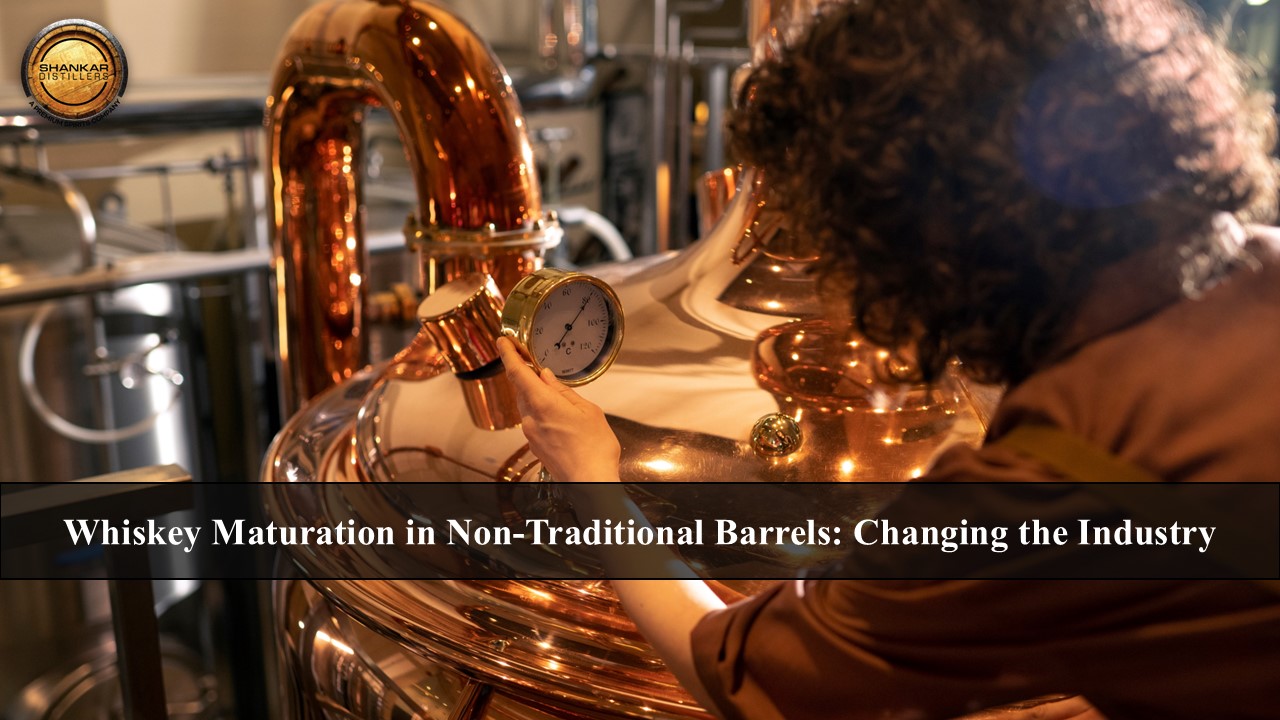A New Approach to Whiskey Aging: Non-Traditional Barrels - PowerPoint PPT Presentation
Title:
A New Approach to Whiskey Aging: Non-Traditional Barrels
Description:
As the demand for innovation rises, whiskey distillers are turning to non-traditional barrels to experiment with new flavors. Using casks from rum, sherry, and other spirits, distillers are adding complexity and intrigue to traditional whiskey like Straight Bourbon Whiskey. These barrels introduce a diverse range of flavors, from tropical fruit to rich molasses, expanding the possibilities for unique tasting experiences. This shift in aging techniques is attracting both seasoned whiskey enthusiasts and newcomers, while also redefining how the industry approaches whiskey maturation and flavor development. – PowerPoint PPT presentation
Number of Views:0
Title: A New Approach to Whiskey Aging: Non-Traditional Barrels
1
Whiskey Maturation in Non-Traditional Barrels
Changing the Industry
2
In the world of whiskey, tradition has long
dictated that oak barrels, particularly American
oak, are the preferred vessel for aging. However,
as consumer palates evolve and demand for unique
whiskey experiences grows, distilleries around
the globe, including whiskey distillers in the
USA, are turning to non-traditional barrels to
push the boundaries of whiskey maturation. From
rum to sherry barrels, the use of alternative
wood types is creating exciting new flavor
profiles that are shaking up the industry. For
whiskey enthusiasts, the allure of trying
something different has driven the rise of
experimenting with non-traditional barrel
finishes. Historically, "Straight Rye Whiskey"
and "Straight Bourbon Whiskey" have adhered to
strict aging guidelines in oak, but distillers
today are exploring new avenues to innovate. The
infusion of rum, sherry, or even wine cask
influences during the aging process has resulted
in whiskey that surprises the palate and
intrigues a growing market.
3
A Shift in Flavor Profiles Traditionally, oak
barrels impart familiar flavors like vanilla,
caramel, and spice to whiskey. These have long
been the hallmarks of "Straight Bourbon Whiskey"
and "Straight Rye Whiskey." However, by using
non-traditional barrels, distilleries can
introduce more complex notes, such as tropical
fruits from rum casks or dried fruits and
nuttiness from sherry barrels. These barrels,
seasoned with other spirits, interact with the
whiskeys natural characteristics to create a
unique interplay of flavors that challenge the
conventional idea of what whiskey should taste
like. For example, whiskey aged in sherry
barrels often exhibits deep, rich fruit
tonesfigs, raisins, and datesadding layers of
sweetness and complexity. On the other hand, rum
barrels may impart hints of sugarcane and
molasses, making the whiskey feel more exotic and
complex. These unconventional flavors are
creating a broader appeal for whiskey, especially
among those who may not typically gravitate
towards traditional profiles.
4
Consumer Demand and Market Appeal As the whiskey
industry evolves, so do the tastes of its
consumers. Todays whiskey drinkers seek more
than just a bottle that adheres to tradition
they crave innovation, new experiences, and
storytelling. The use of non-traditional barrels
allows distillers to stand out in a crowded
market, offering a unique selling point that
often comes with a compelling narrative about the
journey of the whiskey. Additionally, whiskey
aged in non-traditional barrels taps into the
broader trend of crossover between spirits
categories. Whiskey enthusiasts are eager to
taste products that blur the lines between
whiskey, rum, sherry, and even wine, finding
pleasure in the unexpected combinations of
flavors. This trend has not only caught the
attention of traditional whiskey consumers but
has also attracted newcomers who are curious to
explore these bold, new flavor profiles. Distille
ries like Shankar Distillers Premium Whiskey
Distillers are capitalizing on this trend by
crafting products that leverage these unique
maturation methods, providing their audience with
whiskey that delivers both quality and novelty.
The growing demand for innovative whiskey is
shifting the industry landscape, pushing
distillers to keep pace by embracing creativity
while maintaining high standards in production.
5
Industry Impacts and Future Prospects The shift
towards non-traditional barrels is already
creating ripple effects throughout the whiskey
industry. For one, its challenging the
regulatory bodies that define what whiskey is and
how it should be made. Theres an ongoing debate
about how far experimentation can go before a
whiskey ceases to be a "Straight Bourbon Whiskey"
or "Straight Rye Whiskey," given the legal
requirements tied to aging in new charred oak
barrels. However, these regulatory challenges
havent stopped distillers from exploring
creative avenues. Some choose to blend the
traditional with the experimentalfirst aging
their whiskey in the legally required oak barrels
and then finishing it in non-traditional casks
for an added layer of complexity. This dual
maturation process allows distillers to innovate
while staying within legal boundaries. Looking
ahead, whiskey maturation in non-traditional
barrels is likely to become a staple in the
industry. As consumer interest in niche and
premium products continues to grow, distillers
are expected to further push the boundaries of
flavor innovation. This evolution represents an
exciting time for whiskey lovers, as the variety
of tastes, aromas, and experiences will only
expand.
6
- In conclusion, the use of non-traditional barrels
for whiskey maturation is not only changing the
flavor profiles of whiskey but is also reshaping
the market and industry itself. By experimenting
with rum, sherry, and other barrels, distillers
can offer consumers a fresh take on classic
whiskey styles, enriching the experience of
enjoying "Straight Rye Whiskey" and "Straight
Bourbon Whiskey." As this trend grows, its clear
that the future of whiskey will be defined by a
blend of tradition and innovationan exciting
prospect for both distillers and whiskey
enthusiasts. - Useful Links
- Detroit whiskey
- Bourbon Whiskey recipes
7
Thank You
Follow us on

